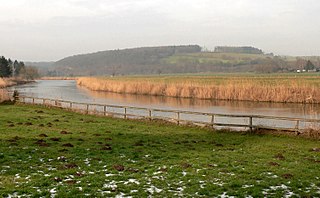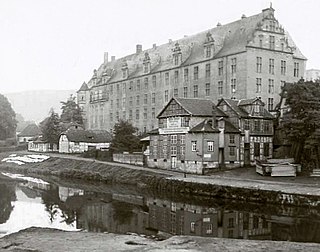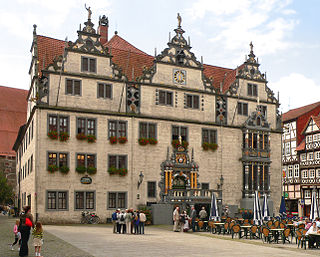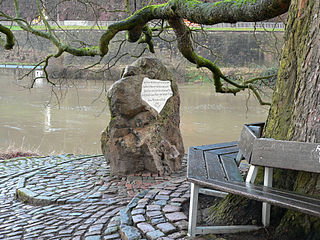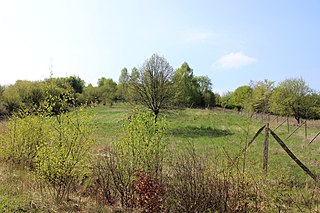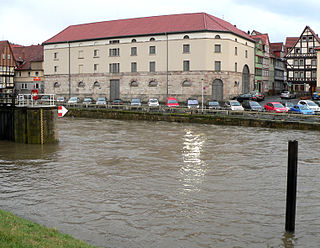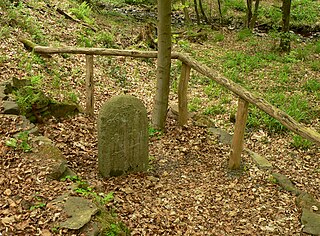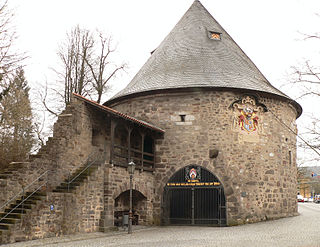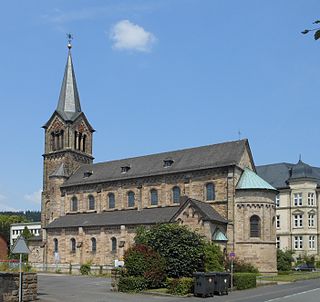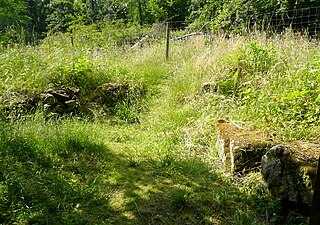11 Sights in Hann. Münden, Germany (with Map and Images)
Legend
Welcome to your journey through the most beautiful sights in Hann. Münden, Germany! Whether you want to discover the city's historical treasures or experience its modern highlights, you'll find everything your heart desires here. Be inspired by our selection and plan your unforgettable adventure in Hann. Münden. Dive into the diversity of this fascinating city and discover everything it has to offer.
Sightseeing Tours in Hann. Münden1. Römerlager Hedemünden
The Roman camp of Hedemünden is considered an early Roman fortification, the remains of which are located near the lower reaches of the Werra on the now wooded castle hill on the outskirts of the village of Hedemünden, a district of Hann. According to archaeological investigations, the rich find material of Roman origin suggests a Roman military camp built during the Augustan Germanic Wars at the time of the birth of Christ.
2. Welfenschloss
The Guelph Castle Münden is a former castle in Hann. Münden in southern Lower Saxony, which was included in the medieval city fortifications of Münden. The palace complex, which today consists of two wings, was built from 1501 by Duke Erich I of Brunswick-Lüneburg as a residential palace with administrative headquarters in the Gothic style, with a predecessor complex to be assumed to be a medieval castle. When the Guelph Castle was destroyed by fire in 1560, Duke Erich II had it rebuilt in the style of the Weser Renaissance or Dutch Renaissance as a four-winged complex from 1571 onwards. At his death in 1584, the building was unfinished and lost its importance, as the Guelph sovereigns used it only sporadically as a place to stay. After destruction in the Thirty Years' War, the castle was used as barracks and later as a granary. Today it is the seat of public institutions.
3. Alte Werrabrücke
The Old Werra Bridge is a 105-metre-long stone arch bridge over the Werra in Hann. The structure, which was first mentioned in a document in 1329 as a stone bridge, connects the city with the historic suburb of Blume in the district of Questenberg. The bridge is one of the oldest preserved stone bridges in the Upper Weser and Werra areas.
4. Weserstein
Weserstein or Wesersteine is the name given to three memorial stones located in the district of Göttingen in southern Lower Saxony (Germany) and in the district of Wesermarsch in northern Lower Saxony. Two of these stones stand in Hann. Münden at the confluence of the Werra and Fulda rivers at 116.5 m above sea level, and another memorial stone stands in the Nordenham district of Blexen at the beginning of the estuary of the Weser into the North Sea.
5. Historisches Rathaus
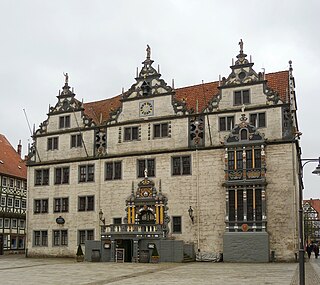
The Münden Town Hall is a listed building in the town of Hann. Münden in southern Lower Saxony, the core of which dates back to the 14th century. Through a conversion at the beginning of the 17th century, it was given its show façade in the style of the Weser Renaissance, which has been preserved to this day.
6. Hühnerfeldberg
The Hühnerfeldberg near Sichelnstein in the southern Lower Saxony district of Göttingen is an elongated spoil heap in the Kaufung Forest, which was filled up from overburden parts of the Münden Tunnel. Its highest point is at 418.4 m above sea level.
7. Historischer Packhof
The Packhof is a packing yard built in 1840 in Hann. Together with the nearby Alter Packhof, it was used during the 19th century to store goods of long-distance trade on the rivers Fulda, Weser and Werra. The listed Packhof is located on the banks of the Werra on the Wanfrieder Schlagd. Today it is used for cultural events, such as theatre performances.
8. Mordsteine
The Murder Stones are two atonement stones erected in 1614 near the district of Bonaforth in the town of Hann. They are listed as historical monuments and commemorate two Münden citizens who were victims of a robbery-murder at the time.
9. Rotunde
The Rotunda in Münden is a former Zwinger tower in Hann. Münden in southern Lower Saxony, which belonged to the medieval city fortifications of Münden. The rotunda, built at the beginning of the 16th century, served to protect the city gate Oberes Tor, which was a bastion of the city wall on the outside.
10. St.-Elisabeth-Kirche
St. Elisabeth is the Catholic parish church in Hann. The neo-Romanesque church with the patronage of St. Elisabeth of Thuringia was built from 1887 to 1889, your parish belongs to the deanery of Göttingen and is the southernmost parish church of the Diocese of Hildesheim.
11. Lippoldsburg
The Lippoldsburg was an early medieval hillfort near Hann. Münden in southern Lower Saxony, which served as a refuge for the local population. Its remains are located southwest of the district of Lippoldshausen about 500 m north of the Werra. It lies in the wooded Ilkstal on a west-facing mountain spur that drops steeply on three sides.
Share
How likely are you to recommend us?
Disclaimer Please be aware of your surroundings and do not enter private property. We are not liable for any damages that occur during the tours.
